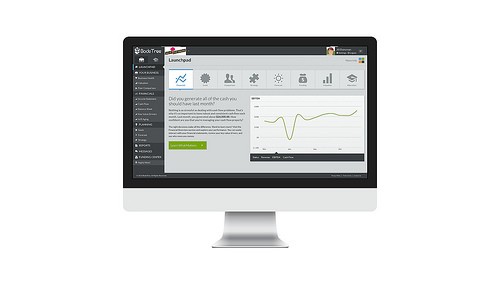ETFs VEnd Funds How to Choose
Post on: 9 Июль, 2015 No Comment

About
Closed-end funds have been around since 1893. So how do the granddaddies of the investment fund world stack up beside the somewhat new kid on the block — the exchange-traded fund?
The fact that in 17 years, ETFs have eclipsed over $1 trillion in global assets under management, versus closed-end funds, which remain about $200 billion after 100 years, tells the whole story, says Dan Weiskopf, principal of Global ETF Strategies at Forefront Advisory.
Shares of CEFs are created through initial public offerings, after which they trade on major stock exchanges, similar to stocks. Because they trade in this way, CEFs will have both a market price and net asset value (NAV). Their market prices fluctuate based on supply and demand, and typically trade at a premium to or at a discount below the fund’s NAV.
Closed-End Funds: The Basics
So what do you need to know about CEFs? Their operating costs are often divided pro-rata among all shareholders and can be expensive if [assets under management] are not substantial, notes Weiskopf. Expenses and fees can be two or three times as high as those for ETFs, he adds.
Periodic distributions from the funds are made according to a prescribed schedule, and they aren’t always earned through investment assets. Therefore, those distributions may be maintained at the expense of NAV. In the case of leveraged funds, this can be very expensive, adds Weiskopf. Leveraged funds can be as much as 20 to 40%, he says. Then too, many CEFs are relatively illiquid because of their small float. A small float does not attract enough market participants to narrow the spread between NAV and market price.
Retail investors often look at CEFs as an asset class. I need income and a leveraged municipal bond fund will provide 5% after tax return, Weiskopf describes a typical CEF investor’s thought process. I should look at this fund as a source of monthly income.
Unfortunately, he says, They don’t look at the structure as a key part of the fund investment strategy. Therefore, the fund comes public at a premium to NAV and then with leverage can end up selling at a substantial discount.
The Illusion of High Yield
Many closed-end funds have attractive yields, but can be confusing, says Patrick Galley, chief investment officer with RiverNorth Capital Management. These attractive yields are achieved due to the funds’ ability to stay fully invested, their utilization of leverage, and in some instances a return of capital. Investors should not invest in closed-end funds based on their yields alone, he says. They should also thoroughly analyze the fund to determine whether its yield will stay viable.
Know too, that because closed-end funds have a fixed number of shares, the market price deviates from the closed-end fund’s NAV. This observable inefficiency offers investors the ability to purchase closed-end funds at a discount to their NAV. We opportunistically invest in closed-end funds that have attractive discounts that we believe will narrow in the future. The narrowing of a closed-end fund discount is a unique alpha source [additional return above a benchmark], says Galley.
Also, Many CEFs employ opportunistic leverage to increase income distributions, says Christian Magoon, CEO of Magoon Capital. Leverage, used opportunistically, can enhance a fund’s payout. It is important to understand whether a fund has the ability to use leverage, is using leverage, and how much that leverage is contributing to the current income stream of that fund.
When considering an investment in a CEF, consider the market and NAV price history of the fund, as well as funds in the same asset class. This information allows you to understand the historic premium or discount ranges the fund and its peers have traded at. It may also give you an indication on the current attractiveness of a fund or indicate how it may perform during choppy waters, adds Magoon.
ETFs Offer More Adventurous Options

The discounts on closed-end funds in many cases are a function of investors’ fear and greed levels, says RiverNorth’s Galley. The recent market volatility caused discounts to widen in the short term, so there are currently many attractive equity and hybrid closed-end funds trading at attractive double-digit discount levels.
ETFs though, are generally relatively static baskets of stocks designed to track an underlying index, whereas CEFs are almost always actively managed. In this respect, ETFs are similar to traditional index mutual funds, while CEFs more closely resemble actively-managed open-end funds, explains David Twibell, president of wealth management for Colorado Capital Bank. The majority of closed-end funds focus on fixed income or enhanced-yield strategies.
ETFs can be far more adventurous, offering specialized sector funds that appeal to investors who want to invest in commodities, hard assets like gold, silver, currencies and other assets not normally offered through CEFs, points out Joe Virostek, managing director of BPU Investment Management.
But Joseph Ventura, owner of William Tell Financial Services cautions, ETFs with very narrow strategies can make it hard for investors who wrestle with choices they often do not fully understand, especially in the long term. Commodities may be attractive one day, but in the long run, no one knows. You have to be careful of going for the flavor-of-the-month, he advises.
The Potential for Premium
ETFs are also touted for their fairly low expense ratios, while CEFs costs are over 2% in many cases, adds Twibell. And, because most ETFs mimic stock indexes, their holdings are transparent, while the holdings in a CEF are not. Because of that transparency, an ETF trades close to the NAV of its holdings. By contrast, closed-end funds may trade at a significant premium or discount to their NAV. And while both investments trade on the daily market like stocks, ETFs can have unlimited amount of shares to trade, while closed-end funds are closed because once the capital is raised for the fund, no more shares will be created for investors, explains attorney Ary Rosenbaum of the Rosenbaum Law Firm.
So why might you choose a CEF over an ETF? Investors seeking high levels of current income, active portfolio management and who aren’t as concerned about potential premiums or discounts to their funds’ NAVs, might want to consider CEFs, says Magoon.
Or, if you can’t decide, PowerShares makes it easy. PowerShares CEF Income Composite Portfolio (PCEF) is an ETF that tracks closed-end funds. Sometimes, you can have it both ways.














